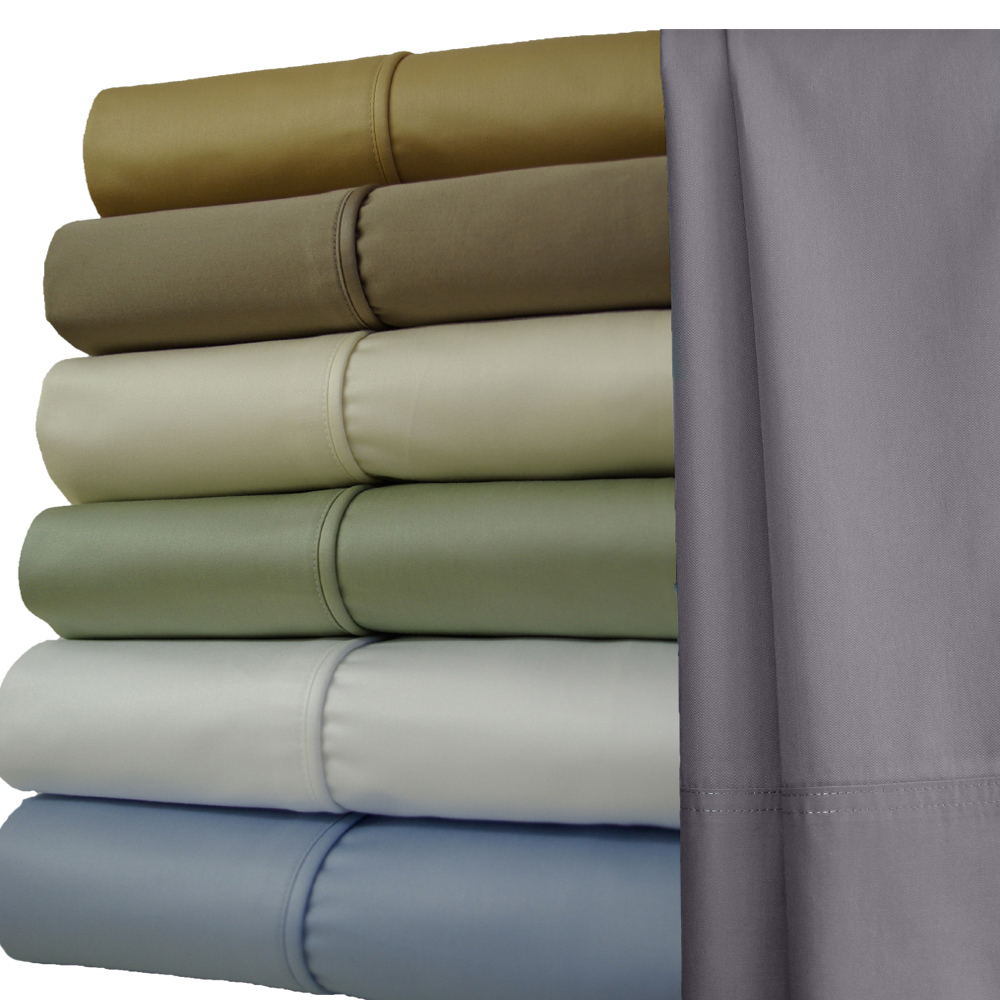Microfiber Sheets
Microfiber sheets are made from finely woven strands of silky material and polyester. They are very soft to the touch but are made in a machine rather than from natural ingredients. Some different styles of microfiber sheets may even consist of finely ground wood pulp or recycled material.
The stronger and softer the microfiber sheet, the thicker the strands used during the weaving process are. It is a concept similar to that of a cotton sheet, where the higher thread counts are not only more durable but also smoother to the touch.
- Soft to the touch
- Low maintenance
- Durable
Microfiber sheets of good quality should be extremely soft to the touch, due to the multiple materials and finely woven threads that make up the composition of the sheet. These sheets can be soothing to those with skin ailments but some consumers have reported irritation from the multiple types of materials used to produce the thread.
Like their cotton counterparts, microfiber sheets will have a softer, smoother touch when the thread count is high. The higher the thread count will determine not only the softness and appearance of your sheet but also the longevity.
Microfiber sheets are low maintenance, as they can be washed and dried without special instructions or detergent. They are durable enough to be washed on a normal cycle in your washing machine and will maintain their shape and size even after the use of a dryer.
Ensure that you fold your microfiber sheets once they have completed their drying cycle to avoid creases and wrinkles forming in the set.
Microfiber sheets are durable in their own right. While cotton sheets currently hold the title for one of the top long-lasting sheet types, microfiber can also withstand multiple washings and prolonged use.
If the sheets are of lower quality, however, and are not composed of a high thread count, rips and tears are possible after only a few months. Sheets need to be considered an investment, so sometimes it is more financially viable to purchase expensive sheet sets from the beginning. Failure to do so will result in a repeated expense and potentially leave you with no sheets on your bed or a set that has annoying rips and tears.
Cotton Sheets
Cotton sheets are a favorite of numerous generations when it comes to purchasing and recommending bed sheets to peers. There is something soothing and comforting about cotton, whether it be the sturdy longevity that these sheets possess, or it be the soothing cool but dry material that covers your skin.
Cotton sheets have long been recommended by healthcare professionals for those who suffer from skin-related ailments, due to their soothing, un-puckered material. Those who experience night sweats throughout the night also report a night of comfort when sleeping on cotton sheets, as they have moisture-wicking properties and a high level of breathability.
- Soothing to the skin
- Natural moisture-wicking properties
- Durable while maintaining softness
Cotton sheets are very soothing to the skin, partly thanks to the smooth surface of the fabric. Those who suffer from skin-related conditions, such as eczema or psoriasis find that some types of bedsheets can increase symptoms. Whether the types of sheets that cause symptoms to increase are too warm for sleeping or ribbed to the point of discomfort; whatever the reason, there seems to be no complaints when it comes to sleeping on cotton sheets.
Cotton sheets are the only type of sheet that can boast about their natural moisture-wicking properties, so great those who suffer from night sweats rave about them.
Cotton has a high level of breathability that allows for air circulation throughout the night, regardless of the weight applied to the sheet. For those who sleep hot or experience night sweats throughout slumber, cotton can alleviate some of those symptoms by regulating and cooling the body’s core temperature.
If night sweats do occur, cotton sheets tend to dry faster and repel moisture, allowing for a deeper rest.
Conclusion
Now that you have a bit more knowledge in regards to different types of sheets that are available on today’s market, maybe you might want to change things up and select a different type for your bed! After all, when a person spends almost a third of their life snoozing and sleeping, shouldn’t it be done in comfort and style?
If you have any existing skin conditions or sleep-related health issues; then speak to your pharmacist or trusted healthcare professional about what type of bed sheets could benefit or hinder your ailments. Certain types of fabric and interwoven materials can irritate skin, whereas other types can improve or alleviate some of your symptoms. For example, silk sheets may soothe irritated skin or flannel sheets are too warm for someone who suffers from night sweats.
If this article was helpful to you in any way or you think it would benefit someone else looking at different types of sheets, please feel free to share and forward it! If you use a particular type of sheet or would like to know more, please comment below. Here’s to comfy sleeping!

